
9th ANNUAL


9th ANNUAL
2025 | Unlocking Canada’s Potential for Abundant Oceans
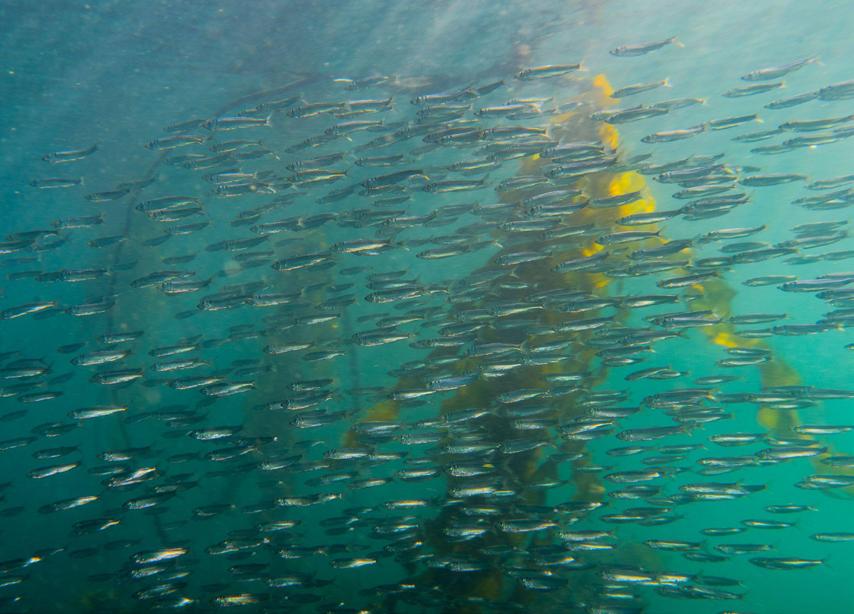
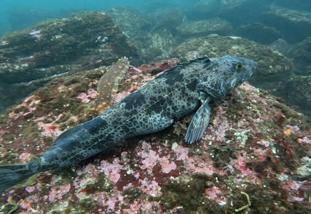
Oceana Canada’s ninth annual Fishery Audit reveals that Canada’s fisheries have reached a decisive moment. Today, a third of critical stocks have more protection because of rebuilding plans, with 12 new plans published and implemented over the past year alone. This marks a turning point, showing that rebuilding is possible when policy, science, and management align.
However, too many stocks remain depleted. Approximately one-third of marine fish and invertebrate populations are still critically depleted or cautious zone, and another third lack basic health status.
The government has delayed listing more federally managed stocks under the Fish Stocks provisions of the Fisheries Act, despite international and domestic commitments to rebuild depleted fish populations. The number of stocks with a recent biomass/abundance estimate has declined, while mortality data remain limited.
Those failures erode the health of Canada’s oceans, coastal economies, and public trust.
Today, global markets are increasingly demanding proof that seafood is sustainably caught using responsible practices. But a number of factors are weakening Canada’s

“trade competitiveness: overfishing, biodiversity loss, and climate change. At the same time, Canadian fisheries are in a vulnerable position thanks to tariff threats, export dependence, and reliance on a narrow set of species.
Over the past year, new rebuilding plans strengthened fisheries decisions and opened pathways for collaboration among the federal government, fishing industry, and Indigenous Peoples. Rebuilding isn’t only about restoring wild fish, it’s about restoring relationships and building a more resilient, inclusive future. High-quality plans demonstrate what’s achievable when science-based policy, Indigenous knowledge, and economic opportunity move in the same direction.
But mismanagement persists for key stocks like capelin, northern cod, and Southwest Nova Scotia/Bay of Fundy herring, which still lack essential safeguards.
Canada’s recently elected federal government has a choice. It can act now to mitigate economic uncertainty and climate disruption, provide secure employment in coastal regions, and safeguard biodiversity and long-term food security. Or it can choose the status quo and risk further loss, ongoing economic uncertainty, and wasted public resources.
Canada’s next decade must be about rebuilding abundance — not managing decline. Rebuilding fisheries is natural infrastructure in action: it strengthens food security, stabilizes coastal economies, and stores carbon in thriving ocean ecosystems. With the right focus, Canada can turn its science and policy foundations into lasting prosperity for people and the planet.”
— Josh Laughren, Executive Director, Oceana Canada
Every year the government delays rebuilding costs Canada in stagnating stock health, lost economic opportunities, and eroded trust in fisheries governance.
Rebuilding is fiscally responsible. Restoring depleted fish stocks and avoiding overfishing reduce the need for costly crisis interventions, stabilize ecosystems for long-term yields, and prevent the expensive social and economic fallout of collapse.
With the passage of the updated Fisheries Act in 2019 and new fisheries regulations in 2022, the upfront costs of putting the regulatory framework in place are behind us. Now Canada needs to focus on implementation, turning the science and policy foundations of the past decade into tangible recovery on the water to deliver lasting benefits.
By fully implementing the Fisheries Act rebuilding provisions for all stocks, strengthening protections for forage fish, and
embedding Indigenous Knowledge Systems in fisheries management, the government can put Canada’s oceans firmly on the path to abundance.
Ensuring timely science assessments, transparent monitoring, and climate-informed decisions will provide certainty for harvesters. And making smart, predictable fisheries decisions informed by science and Indigenous knowledge — not politics — will build resilient fisheries.
We know that consistently applying existing science-based law and policy works. Since 2000, the United States has rebuilt 50 fish populations using this method. Those populations now produce an average of 50 per cent more revenue than when they were overfished.1

1 NOAA (2023). Status of Stocks 2023. National Oceanic and Atmospheric Administration Fisheries. https://www.fisheries.noaa.gov/sustainable-fisheries/status-stocks-2023
In the European Union, the Common Fisheries Policy has mandated science-based management since its 2013 reform, contributing to a 37 per cent increase in the biomass of assessed stocks and a 40 per cent reduction in the proportion of overfished stocks.2
Oceana Canada’s analysis shows that doing the same here could increase the number of healthy fish populations in Canada from 35 per cent to nearly 80 per cent within a decade, delivering long-term stability and economic growth.3
After nine years of audits, the path is clear: Canada knows what needs fixing and what’s possible when action follows evidence. Over the next decade we must move from diagnosis to rebuilding abundance so that healthy oceans once again sustain people, communities, and the planet.
In a time of economic precarity, climate volatility, and global trade friction, healthy fisheries are a strategic asset. They anchor regional economies, creating prosperity and resilience, and strengthen Canada’s reputation as a reliable, sustainable trading partner.
The question is not whether we can afford to act, it’s whether we can afford not to. Rebuilding abundance — Canada’s ocean comeback — is within reach. What’s needed now is the will to act, in accordance with science, in partnership, and with purpose. It’s more than a goal. It’s a vision for the next decade, where healthy oceans fuel food security, reconciliation, and lasting prosperity.

2 European Commission (2025). Communication from the Commission to the European Parliament and the Council: Sustainable fishing in the EU—State of play and orientations for 2026. Directorate-General for Maritime Affairs and Fisheries, COM(2025)296. https://ec.europa.eu/transparency/documents-register/detail?ref=COM(2025)296&lang=en
3 Derived from methodologies outlined in a recovery projections analysis, applied to stocks with updated 2024 statuses, using conservative assumptions for those with uncertain statuses. Source: McLennan, L., Schijns, R., and Rangeley, R. (2023). Projections of Fishery Recovery in Canada. In: Fishery Audit 2023: Unlocking Canada’s Potential for Abundant Oceans. Oceana Canada. https://oceana.ca/wp-content/uploads/sites/24/2023/11/A3.-Projections-of-Fishery-Recovery-in-Canada.pdf

Since Oceana Canada’s first Fishery Audit in 2017, Canada has taken meaningful steps toward safeguarding and rebuilding marine biodiversity. But as this ninth annual assessment reveals, progress remains uneven. Current efforts still fall short of meeting Canada’s international and domestic commitments to rebuild abundance and secure long-term prosperity from healthy oceans. In the face of economic uncertainty, climate volatility, and global trade friction, the federal government must accelerate progress.
Over the past year, there have been:
• More plans released to rebuild critically depleted stocks: One-third of critically depleted stocks now have rebuilding plans in place — a meaningful step toward recovery. While current legal requirements do not extend to all depleted stocks, this progress demonstrates the potential for broader action.
• More stocks assigned health status: Four more stocks were assigned a health status in 2025. However, one-third of all marine fish and invertebrate populations are still classified as uncertain due to insufficient reference points and stock status information. Addressing these persistent data gaps is critical to ensuring transparency, accountability, and effective management.
• No overall change in the number of healthy stocks: Around a third of marine fish and invertebrate populations are either critically depleted or in the cautious zone, while just over one third can be considered healthy.
This scorecard presents the top-line results for 2025, while a deeper dive into the findings begins on page 8.
* The shift of these two stocks — cod and capelin — out of the critical zone was a result of revised science benchmarks, rather than a resurgence in biomass of both stocks, which still remain well below historical or ecologically productive levels.
Fisheries and Oceans Canada (DFO) uses three categories to assess fish stock health. They are often defined relative to the stock biomass that would produce a maximum sustainable yield (BMSY). Maximum sustainable yield is the largest volume of fish that can theoretically be harvested without reducing the population size over the long term.
A stock is considered healthy if its biomass is greater than 80 per cent of that which would support BMSY When a stock is in this zone, fisheries management decisions are designed to keep it healthy.
A stock falls in the cautious zone if its biomass is between 40 and 80 per cent of BMSY. If a stock enters this zone, harvesting rates should be reduced to avoid serious depletion and promote rebuilding to the healthy zone.
A stock is considered in the critical zone if its biomass is less than 40 per cent of BMSY. In this zone, serious harm is occurring and conservation actions become crucial. Under Canada’s modernized Fisheries Act, rebuilding plans are legally required for prescribed stocks in the critical zone.

Maximum sustainable yield (MSY) remains a globally accepted standard for fisheries management. The UN Food and Agriculture Organization’s Code of Conduct for Responsible Fisheries, to which Canada is a signatory, indicates that governments must adopt measures based on the best scientific evidence available to maintain or restore stocks at levels capable of producing MSY.
However, the MSY approach is increasingly criticized for reflecting values that commodify marine organisms and favour commercial yields over other socio-ecological objectives and for failing to include Indigenous Knowledge Systems.4 To ensure long-term sustainability and resilience, Canada must move toward a more holistic approach where decisions:
• Are grounded in the precautionary approach, taking proactive rebuilding actions and applying caution when scientific knowledge is uncertain.
• Include an ecosystem approach to fisheries management (EAFM), considering fishing impacts and factors like climate change and predator-prey relationships.
• Pair Indigenous Knowledge Systems with Westernbased science, fostering deeper connections to the environment and a fuller understanding of ecosystem dynamics.
Canada’s ocean comeback will depend on adopting an approach that balances social equity, economic, and ecological recovery.
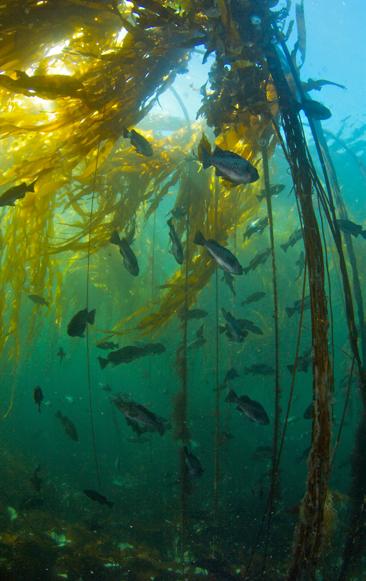
4 Frid, A., Wilson, K.L., Walkus, J., Forrest, R.E., and Reid, M. (2023). Re-imagining the precautionary approach to make collaborative fisheries management inclusive of Indigenous Knowledge Systems. Fish and Fisheries, 24(4): 1–19. https://doi.org/10.1111/faf.12778
to understand the status of fish stocks, their biology and how fishing pressure and environmental factors will affect them in the future.
Effective monitoring to determine how many fish are harvested and discarded from all sources of fishing activity.
Good management decisions that are based on knowledge that considers fish populations and management units in the context of a changing ecosystem and prioritizes long-term health and abundance.
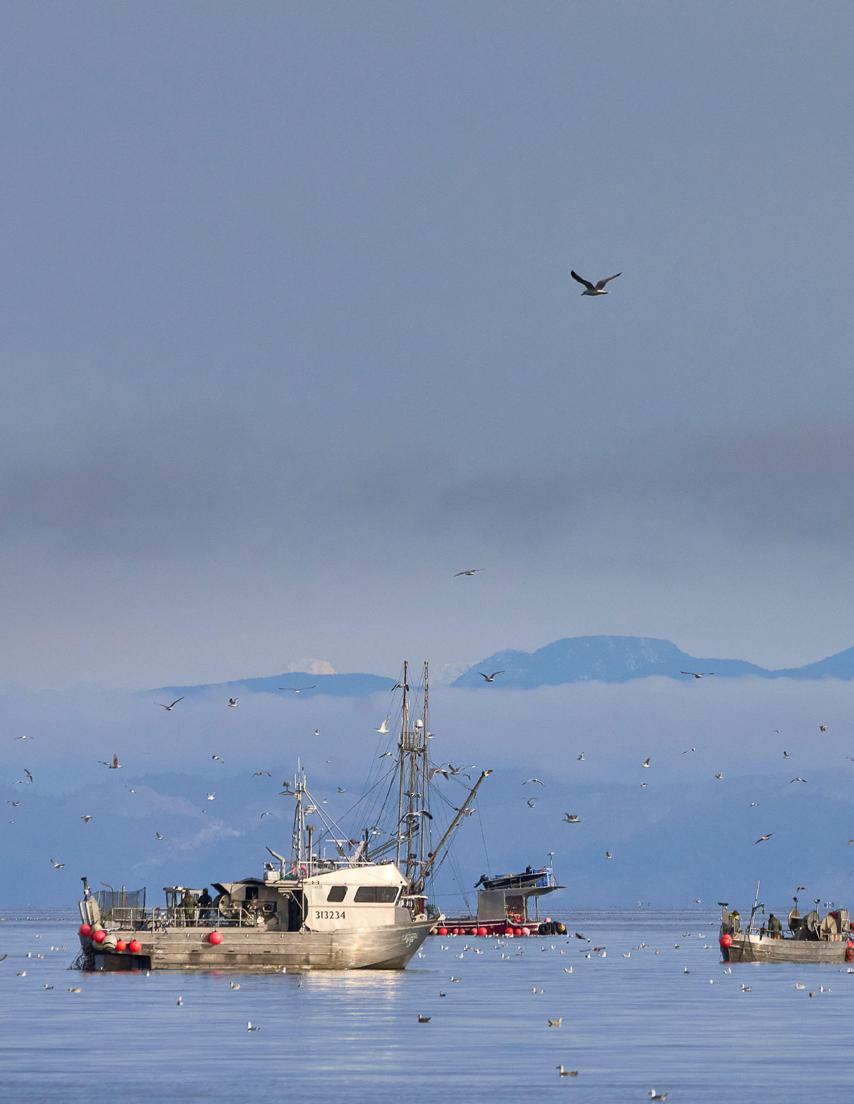

“Fisheries recovery is within reach. By fully implementing Canada’s fisheries laws and policies — and acting with political will — we can restore healthy fish populations within a decade. Transparency and meaningful collaboration with Indigenous Peoples and coastal communities are essential to safeguard livelihoods and secure abundant oceans and highquality Canadian seafood for the future.”
— Rebecca Schijns, Fishery Scientist, Oceana Canada
the Foundation for
Science plays a critical role in guiding fisheries and oceans management. But the data underpinning that advice must be current, transparent, and robust. This year saw small increases in stocks with limit reference points (LRPs), and fishing mortality estimates.
Despite modest advances in science advice since 2017, significant gaps remain: 75 per cent of stocks lack fishing mortality estimates, nearly half lack recent estimates of biomass or abundance, one third still lack LRPs, and roughly half lack upper stock reference points (USRs).
Decision-makers need timely, robust data to manage fisheries effectively.
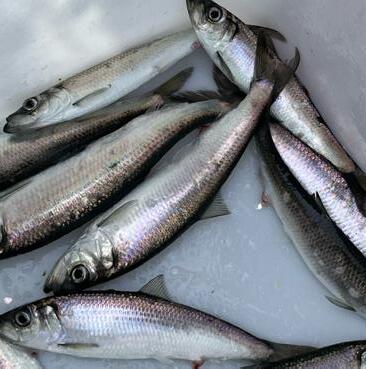
INDICATOR:
Stocks with sufficient data to assign health status (%)
Purpose: Allow scientists to make robust estimates of the amount of fish in the water and assign stock health status.
INDICATOR:
Stocks with recent biomass estimates (%)
Purpose: Help managers make decisions based on recent estimates (i.e., estimates within the last five years) of how many fish are in the water.
Since 2017, there has only been a modest drop in the number of stocks with uncertain health status, despite increases in available data and guidance for setting limit reference points.
The number of stocks with recent biomass estimates continues to decline. Moreover, of the 93 stocks without complete assessments in the last five years, more than two thirds (64 stocks; not shown) have not had an interim update reporting on trends in biomass/abundance proxies.
* 2018 to 2023 data available at Oceana.ca/FisheryAudit2025.
INDICATOR:
Purpose: Allow managers to assess whether a stock is in healthy, cautious, or critical condition; set appropriate harvest levels; and gauge the success of management measures.
An upper stock reference (USR) identifies the boundary above which a fish stock can be considered healthy, while a limit reference point (LRP) identifies the boundary below which it can be considered to be in a critical state. DFO policies — and global best practices — dictate that corrective action should be taken before a stock reaches the limit reference point.
DFO is making progress toward its commitment to develop reference points for all major commercial fish stocks. Yet 32 per cent of stocks still lack LRPs and 42 per cent still lack USRs, forcing many managers to make decisions without crucial benchmarks.
INDICATOR:
Purpose: Help determine the rate of fish removed from a population by fishing activities and inform sustainable fishing limits.
In contrast to the scientifically determined LRP, both the USR and target reference point (TRP) are established through management processes. The TRP refers to the desired state of a stock, based on productivity goals, broader ecological considerations, and socio-economic objectives for the fishery. The TRP is often set at or above the USR.
INDICATOR:
Purpose: Help improve fisheries management decisions by determining the rate at which fish die from natural causes.
Ideally, fishing mortality estimates should include all sources of removal: commercial, recreational, bait, food-social-ceremonial, and bycatch. Yet only four stocks currently have documents that clearly account for all sources.
* 2018 to 2023 data available at Oceana.ca/FisheryAudit2025
This indicator has improved significantly since 2018, likely due to increased use of new modelling approaches that make it easier to estimate sources of mortality.
** New indicator in 2018; 2019 to 2023 data available at Oceana.ca/FisheryAudit2025
As the impacts of climate change intensify, so does the need for ecosystem approaches to management that explicitly consider climate risks in decision-making frameworks. Encouragingly, DFO’s latest departmental plans appear to prioritize research to better understand climate impacts on fisheries, ecosystems, and coastal infrastructure. This knowledge helps managers design adaptive strategies that sustain fisheries and marine ecosystems in a changing ocean. This year, DFO also rolled out a new template for Fisheries Science Advisory Reports that includes a dedicated section on ecosystem and climate change considerations.
More than half of science and management documents now include those climate considerations. However, in many cases the advice is limited or is not yet applied in management decisions. Currently, the science and management documents for more than 40 per cent of stocks still omit climate considerations — but it’s not for lack of evidence. For the vast majority of these stocks (92.9 per cent), peer-reviewed literature is available that examines how climate change is affecting the species.
Assign stock status to all uncertain stocks. Apply ecosystem-based reference points and harvest control rules consistently.
Generate climate-risk-based advice for all stocks.
Collaborate with Indigenous Peoples to pair Indigenous Knowledge Systems and Western science to strengthen ecosystem approaches to fisheries management.
INDICATOR:
Science and management documents that incorporate climate change considerations* (%)
Purpose: Assesses the vulnerability and impact of climate change on fish stocks to inform climate-ready management measures.
* New indicator in 2022. Percentages do not sum to 100% because certain stocks were omitted from the chart due
documents.
**2023 data available at Oceana.ca/FisheryAudit2025
The number of stocks that incorporate or mention climate change effects in science and management documents has roughly doubled since 2022.
Integrating climate data into fisheries decisions is no longer optional — it’s the key for developing plans that enable managers to anticipate ecological shifts, reduce uncertainty, and design harvest strategies that remain effective under changing ocean conditions.

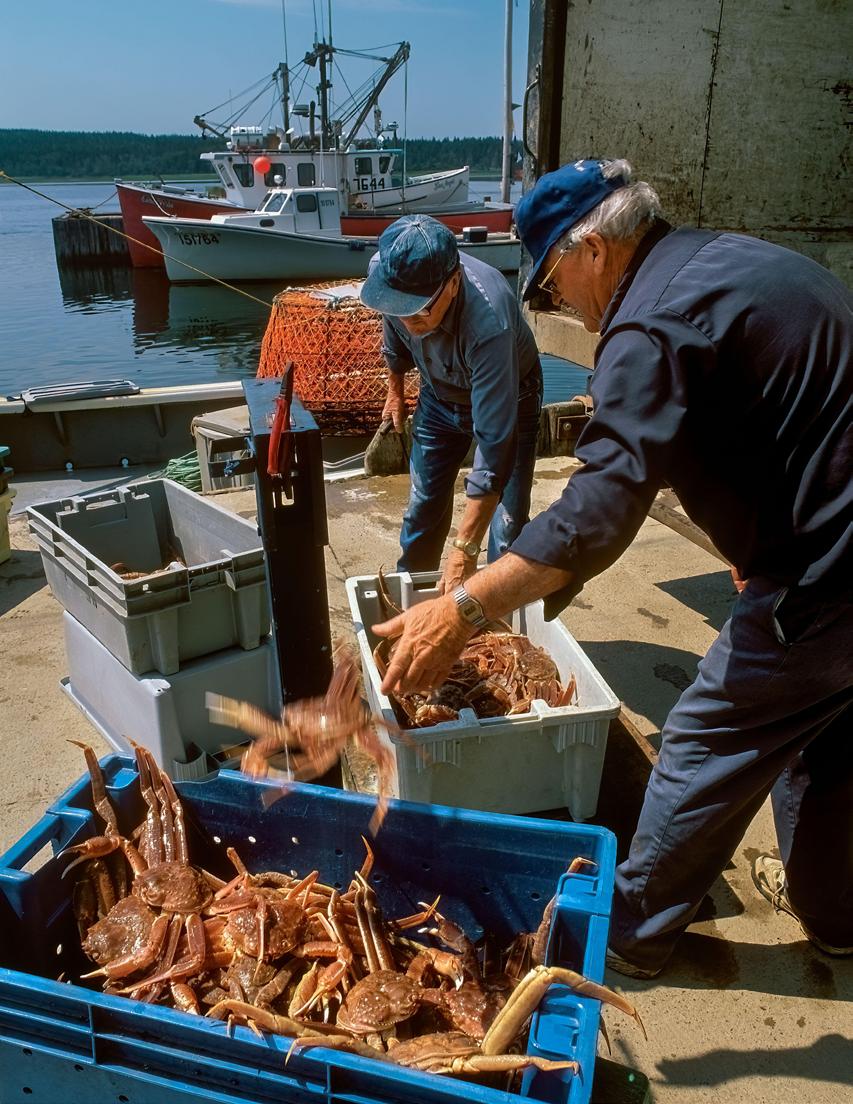

“Counting fish is easy, except they move and you can’t see them. You have to do the annual science, the continual assessment work, to understand what the resource is doing. As the climate changes, we need to make sure we’re doing that annual work. If we miss years, we end up like Alaska. They missed a survey year, and when they checked again, literally the snow crab was gone.”
— Derek Butler, Executive Director, Nunavut Fisheries Association
DFO now has some level of monitoring for most stocks, but for only a fraction do they require use of tools such as logbooks, at-sea observations, dockside reports, or vessel location tracking at full (100 per cent) coverage levels. DFO has yet to fully implement the 2019 Fishery Monitoring Policy for any key commercial marine fish stocks. Issues related to outdated information systems, weak oversight of third-party observers, and conflicts of interest also persist.
There are, however, encouraging signs of progress. The Fishery Monitoring Policy is now part of DFO’s Sustainable Fisheries Framework work plan, which outlines DFO priorities. The federal government has invested $30.9M to implement the policy for 23 priority stocks by 2028, and an additional $5M to support Indigenous-led fisheries monitoring.
DFO is also taking steps to modernize monitoring. Electronic logbooks became mandatory in 2025 for key fisheries across Atlantic Canada, including lobster and snow crab in the Gulf Region and Newfoundland and Labrador, with full implementation in Quebec and continued use for Unit 1 redfish. Proven solutions like electronic video monitoring promise to help fill data gaps where at-sea observer coverage is limited. Modern monitoring can bring harvesters and decision-makers closer together — collaborating using accessible data that aligns with on-thewater practices and real-time decision making.
INDICATOR:
Purpose: Help prevent overfishing, control bycatch, and collect scientific information for stock assessments.
Some
In 2025, coverage requirements increased modestly across most forms of catch monitoring compared with 2024, continuing significant long-term gains since 2017. Yet the percentage of stocks that require 100 per cent monitoring remains low.
* 2018 to 2023 data available at Oceana.ca/FisheryAudit2025.
** New indicator in 2019; 2020 to 2023 data available at Oceana.ca/FisheryAudit2025.
Finalize implementation of the Fishery Monitoring Policy for 23 priority stocks and begin implementation for at least five additional stocks in each DFO Region annually until all stocks are covered.
Accelerate modernization of monitoring through electronic reporting and monitoring technologies that record all sources of catch.
Without accurate data on fishing impacts and stock levels, it becomes nearly impossible to make informed decisions and develop sustainable fishing practices.
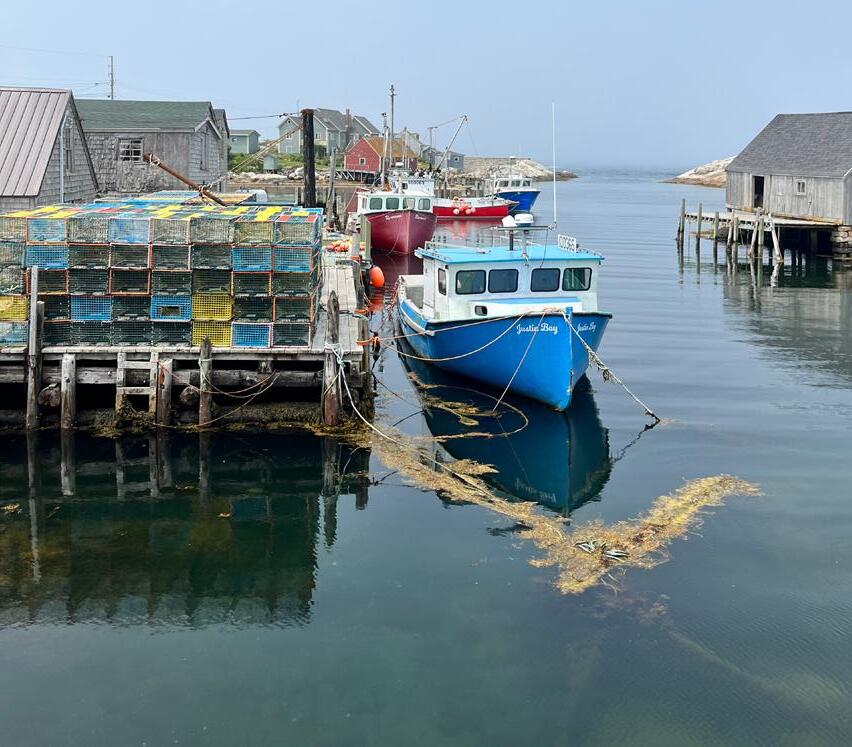

“Innovative tools like electronic logbooks are ready to scale, and they’re already transforming how Canadian fisheries are managed. What’s needed now is for the Canadian government to ramp that proven potential into practice by mandating all harvesters to start recording their activity in electronic logbooks and bring great data to serve ecosystems, fishing communities, and the science we depend on.”
— Julian Hawkins, CEO, Vericatch
In 2025, Canada made its most substantial progress yet on fisheries rebuilding with the release of 12 new rebuilding plans to guide recovery of critically depleted stocks. Thanks to this achievement, more than a third of Canada’s critically depleted stocks now have rebuilding plans, up from just 11.5 per cent in 2017.
This milestone follows a decade of work by Oceana Canada and other ocean advocates to secure science-based management that restores abundance — including the 2019 amendments to the Fisheries Act that made rebuilding plans a legal requirement for critically depleted stocks.
However, this requirement is limited to stocks listed in the Act’s Fish Stocks provisions. To date, DFO has listed only
Purpose: Provide a planning framework for the conservation and sustainable use of Canada’s fisheries, outlining how a fishery will be managed over a given period.
30 of nearly 200 stocks. Of those 30, half are in the critical zone, leaving many critically depleted stocks without Fisheries Act protection.5 At the current pace, it will take more than a decade for all fish stocks to be listed.
Other challenges persist. Declines in forage fish constrain the recovery of key groundfish stocks and leave the lobster and snow crab fisheries without preferred bait. The Precautionary Approach continues to be applied inconsistently. And as discussed later, quota decisions for several depleted stocks show that short-term political and economic considerations too often override science-based policies that support longterm sustainability.
Although the number of stocks included in IFMPs remained unchanged from last year, there has been a significant overall increase since 2017, largely driven by the publication of several new multi-stock IFMPs in 2019.
* 2018 to 2023 data available at Oceana.ca/FisheryAudit2025.
5 A total of 21, based on Oceana Canada’s Fishery Audit index stocks. Note that index stocks do not include salmon, and index stocks may differ slightly from DFO’s key harvested stocks identified in the Sustainability Survey for Fisheries. INDICATOR:
Stocks in the critical zone with rebuilding plans in place (%)
Purpose: Provide a planning framework to rebuild stocks out of the critical zone. Serious harm is occurring to stocks in this zone, and actions that support recovery — such as catch limits, habitat restoration, and closed areas — are crucial.
In 2025, DFO released 12 new rebuilding plans covering forage fish, groundfish, and salmon. Although most depleted fisheries still lack a clear recovery pathway, the release of these plans represents an important turning point. The Minister must now quickly add all remaining stocks under the Fish Stocks provisions to ensure they benefit from the requirements of the Fisheries Act
Implement rebuilding plans for all remaining critical stocks.
Make annual management decisions consistent with the law and policies to grow and maintain healthy stocks.
Ensure diverse and inclusive representation at advisory committees and make transparent, evidence-based decisions.
Canada’s fisheries remain economically vulnerable due to heavy reliance on four marine species — lobster, shrimp, snow crab and scallop — which generate 77 per cent of landed value. Limited diversity in both species and trading partners exposes the fishing industry to economic risk, especially as climate pressures mount. Rebuilding is a long-term solution to these urgent pressures.

“This milestone is a direct reflection of our commitment to restoring fish populations, managing marine resources sustainably, all while fostering economic growth and environmental stewardship … Together, we’re ensuring healthy, abundant fisheries for generations to come.”
— Joanne Thompson, Fisheries Minister, as quoted in The Telegram following the release of rebuilding plans.6
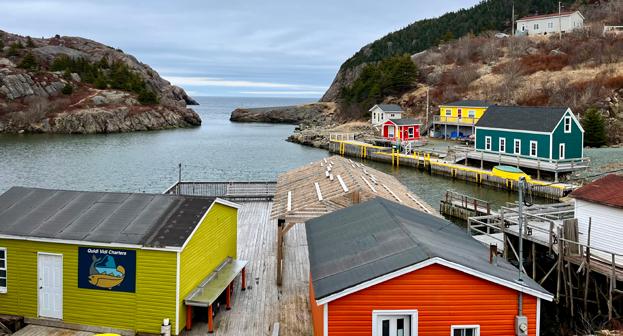
6 Kean, G. (2025). Long road to recovery: Federal government releases fish stock rebuilding plans. The Telegram. https://www.saltwire.com/newfoundland-labrador/federalgovernment-releases-fish-stock-rebuilding-plans
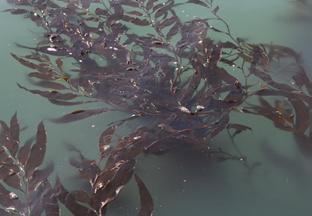
By fully embracing ecosystem-based management and meaningfully including Indigenous Knowledge Systems, DFO can better steward Canada’s oceans in collaboration with Indigenous Peoples.
DFO has long committed to employing the Precautionary Approach, including key principles such as reducing harvest rates when data is limited and rebuilding stocks when they become critically depleted.
But the Precautionary Approach alone is not enough to reduce ecological and socio-economic risks. Instead of managing each stock individually, more holistic ecosystem-based management must be embedded into decision frameworks, integrating a wide range of environmental information, from climate risks to species interactions.
A central element of ecosystem-based management is ensuring enough forage fish to sustain the predators that feed on them. Rebuilt forage fish populations could support thriving cod, turbot, redfish, and salmon, while also providing enough bait for economically vital fisheries such as lobster and snow crab.
Today, however, only half of Canada’s 16 key forage fish stocks have reference points, and more than a third lack a health status. Only three forage fish stocks are protected under the modernized Fisheries Act. And although Canada’s 2009 Policy on
Managing Forage Species includes elements of ecosystem-based management, it does not apply to existing fisheries.
These shortfalls put forage fish at risk of overexploitation. In 2025, most quota decisions for these species ignored science advice, with 90 per cent of landings coming from stocks in the cautious, critical, or uncertain zones in 2024. Meanwhile, climate change is increasing pressure on forage fish.
Evidence suggests that precautionary and ecosystem-based management practices are required to promote recovery of Canada’s most depleted forage fish stocks. Now, they must be applied to all forage fish through modernized, coast-wide policies.
Not all ecosystem approaches are the same. An ecosystem approach to fisheries management incorporates ecosystem information into stock assessments, science advice, management recommendations, and other harvest strategies for a single stock. It provides a stepping stone toward the end goal of ecosystem-based management, which fully considers the interconnected nature of ecosystems and the ecological, economic, social, and governance aspects of management.
In 2025, DFO published version one of its Maritimes Region Ecosystem-Based Management Framework,7,8 developed through broad collaboration with academics, multiple DFO sectors, Indigenous communities, and stakeholders. It is structured around four interconnected pillars — ecological, economic, social-cultural, and governance — and includes explicit objectives, a clear structure, and tools for evaluating the cumulative impacts and trade-offs. This ongoing initiative offers a model that could be widely replicated.
7 EBM Initiative website: https://sites.google.com/view/ebminitiative/ebm-initiative-home
8 Bundy, A., Eger, S.L., Stephenson, R.L., Westhead, M. the Maritimes Ecosystem-Based Management (EBM) Working Group, and EBM Task Group Members (2025). Fisheries and Oceans Canada’s Maritimes Region Ecosystem-Based Management Framework for Sustainable Management. Can. Tech. Rep. Fish. Aquat. Sci. 3716: vii + 175 p. https://doi.org/10.60825/vwv9-2728
Pairing Indigenous Knowledge Systems and Western-based science can accelerate rebuilding efforts, offering deep, place-based insights and practices to manage fish populations more holistically. However, a recent analysis9 shows that 87 per cent of DFO documents still fail to meaningfully include Indigenous Knowledge Systems. This hinders the development of adaptive, equitable, and resilient management systems.
The rebuilding plan for Haida Gwaii herring is a notable exception. It combines the Haida Nation’s cultural values and ecological knowledge with scientific tools such as stock assessments and data analysis. The result is a fuller picture of herring health that reflects not only ecological dynamics but also the species’ deep cultural significance and central role in sustaining both marine ecosystems and coastal Indigenous ways of life.
Similarly, a research partnership among the Kitasoo Xai’xais, DFO, and academic partners on Pacific herring in Kitasoo Xai’xais territory demonstrates how interweaving Indigenous Knowledge Systems with Western scientific methods can support collaborative management. These processes bring together First Nations and DFO in shared decision-making, giving both a voice in how herring are managed.
These partnerships show the path to abundance includes not just ecological considerations but strong relationships built through trust, shared leadership, and respect for Indigenous knowledge.

Revise Sustainable Fisheries Framework policies to include Indigenous Knowledge Systems.
Implement collaborative fisheries management agreements.
Support Indigenous stewardship initiatives — including fisheries, habitat protection, and monitoring — and expand knowledge-pairing initiatives.
Publish an Ecosystem Approach to Fisheries Management strategy that reflects inclusive, holistic management grounded in both Indigenous Knowledge Systems and science.
Expand the Forage Species Policy to cover all forage fish, managed with ecosystem-based rules informed by Indigenous Knowledge Systems and science.
The Pacific herring rebuilding plan builds on commitments to work together collaboratively in the spirit of reconciliation, defining what a rebuilt herring ecosystem looks like — including ecological, cultural, social, economic, governance, and management aspects.”
— Nang Jingwas Russ Jones, Hereditary Chief, Haida Nation
9 Moffat, K., Snook, J., Paul, K., and Frid, A. (2025). Inclusivity of Indigenous Knowledge Systems in Fisheries Knowledge. Fish and Fisheries, 26(4): 669–687. https://doi.org/10.1111/faf.12905
Both domestic law and international commitments require Canada to rebuild depleted fish stocks, making this a matter not just of ecological stewardship but also of economic strategy, trade integrity, and global leadership.
Under the Fish Stocks provisions of the modernized Fisheries Act, Canada is obligated to implement science-based, precautionary management for major stocks, especially those that are critically depleted.
This legislation gives Canada powerful tools to achieve its goals under key global frameworks, including the UN Fish Stocks Agreement, the UN Convention on Biological Diversity, the UN Sustainable Development Goals, and the WTO Agreement on Fisheries Subsidies. But effective, timely implementation is essential to maintain Canada’s global credibility.
It is also critical for meeting trade-related sustainability standards. Major export partners, including the European Union, United States, and Japan, are excluding products from poorly managed or overfished stocks. Demonstrating strong, science-backed rebuilding frameworks secures long-term market access, bolsters regional economies, and sustains Canada’s reputation as a supplier of top-quality, responsibly sourced seafood.
Meanwhile, strategic stewardship and timely rebuilding avoid the expensive social and economic fallout that follows a fisheries collapse. Proactive approaches stabilize ecosystems for long-term yields and stronger returns. And by replacing year-to-year conflict with clear, transparent roadmaps, they offer harvesters stability and predictability each season.
The sooner they are implemented, the sooner the rewards arrive. In the Southwest Nova Scotia/Bay of Fundy herring fishery, for example, early rebuilding could have delivered
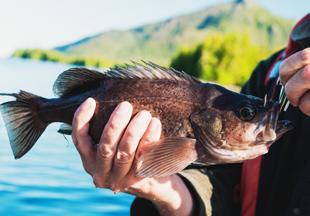
$402 million in value by 2032, revitalizing one of the largest fisheries in the region. Delaying action until 2025 or later defers key benefits to 2035 or beyond, undermining economic returns, postponing job creation, and reducing food security.10
Canada’s modernized Fisheries Act requires the Minister of Fisheries to “promote the sustainability of the stock.” However, the term “sustainability” is not defined. Oceana Canada is calling for amendments to make it clear the goal of the Fish Stocks provisions is to manage stocks to healthy, productive levels, not just to keep stocks in the cautious zone or hovering above the critical threshold.
Prescribe all federally managed fish stocks under the Fish Stocks provisions of the Fisheries Act. Define “sustainable” in the Fisheries Act and regulations.
Publish an annual report to Parliament evaluating progress on the Fish Stocks provisions and the Sustainable Fisheries Framework, with clear targets and timelines.
10 Oceans North (2024). Overlooked & Undervalued: The Economic Case for Rebuilding Forage Fish. Oceans North. https://oceansnorth.org/wp-content/uploads/2024/10/ Overlooked-and-Undervalued-Rebuilding-Forage-Fish.pdf
For some stocks of concern, DFO made sound quota decisions in 2025. These included keeping commercial fisheries closed for depleted southern Gulf of St. Lawrence herring, Haida Gwaii herring, and Atlantic mackerel (while still maintaining Food, Social and Ceremonial fisheries and limited recreational and bait fisheries for mackerel). These difficult but necessary closures allow depleted forage fish populations to rebuild, providing bigger, more sustainable returns in the future.
All three of these stocks are listed under the Fish Stocks provisions, underscoring how decisions are stronger when stocks are subject to the modernized Fisheries Act
However, DFO also made short-sighted decisions — including more than doubling the northern cod quota despite clear warnings from scientists and legal obligations under the Fisheries Act. The stock is barely out of the critical zone, and that status results largely from DFO lowering its limit reference point rather than sustained improvement in population size or productivity.
DFO’s own assessment projects a 71 per cent chance of further decline within three years, risking a return to the critical zone by 2028.11 In contrast, a fully recovered northern cod fishery could generate 16 times more jobs and quintuple its current value.12
Pacific Herring
Haida Gwaii
Atlantic mackerel
Atlantic Herring
Southern Gulf of St. Lawrence spring spawner
DFO also failed to protect capelin: cod’s main prey and the primary constraint on the growth of cod stocks. Although capelin remains in the cautious zone and is forecast to decline, its quota was left unchanged from the previous year.
In the Bay of Fundy, the Fisheries Minister raised the herring quota mid-season by 25 per cent to 20,000 tonnes, ignoring science advice to keep catches below 14,000 tonnes to allow rebuilding. The decision followed pressure from the fishing industry, which also withheld key data needed to complete the 2025 science assessment on time.
Meanwhile, DFO authorized a catch of up to 60,000 tonnes for redfish in the Gulf of St. Lawrence — one of the few healthy stocks in the region — increasing the risk of exceeding strict bycatch limits for critically depleted groundfish like cod and white hake.
These quota increases may deliver short-term benefits for a few, but they undermine the long-term abundance that could yield far greater value, jobs, and resilience if stocks were allowed to rebuild.
Each quota decision is a test of leadership: to choose short-term yield or long-term abundance. Canada’s future depends on choosing abundance.
Capelin
Northeast Newfoundland and Labrador
Atlantic Cod
Northeast Newfoundland and Labrador
A snapshot of a few stocks of concern reveals that the quality of fisheries management decisions once again varied from consistently following science advice.
Capelin Gulf of St. Lawrence
Atlantic Herring
Southwest Nova Scotia/ Bay of Fundy
Redfish Gulf of St. Lawrence
Shield icons represent stocks that are subject to the Fish Stocks provisions of the Fisheries Act
11 DFO (2025). NAFO Divisions 2J3KL Northern Cod (Gadus morhua) Stock Assessment to 2025. DFO Can. Sci. Advis. Sec. Sci. Advis. Rep. 2025/043. waves-vagues.dfo-mpo.gc.ca/ library-bibliotheque/41302710.pdf
12 Sumaila, R. & Teh, L. (2019). Economic and social benefits of fisheries rebuilding: Six Canadian case studies. Oceana Canada. oceana.ca/wp-content/uploads/sites/24/ ubc_oceana_economics_of_rebuilding-final.pdf
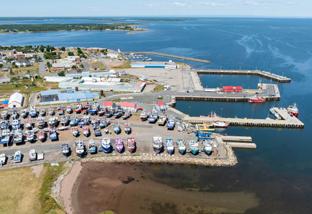
To realize the potential of Canada’s Fisheries Act, the federal government must ensure that rebuilding plans are robust and sufficient to meet rebuilding objectives and reviewed regularly for effectiveness.
A rebuilding plan is a science-based management strategy designed to restore an overfished or depleted fish population to a healthy, sustainable level, while allowing responsible fishing where possible. It replaces reactive crisis management with clear, transparent roadmaps toward shared goals.
In 2025, DFO released rebuilding plans for 12 critically depleted stocks13 prescribed under the amended Fisheries Act As a result, just over one-third of stocks in the critical zone now have rebuilding plans.
Oceana Canada’s analysis shows these plans largely comply with the Act’s legal requirements. Out of nine regulatory criteria — including stock status, causes of decline, measurable objectives, timelines, and review schedules — most scored between 8.5 to 9 out of 9.
However, the quality and ambition of Canada’s rebuilding plans vary widely when measured against more comprehensive best-practice criteria. When evaluated on 10 best-practice criteria, scores ranged from 3.5 to 7.5, with an average of 5 out of 10.
Common weaknesses included vague timelines, limited use of probability estimates, insufficient integration of ecosystem approaches and inclusion of Indigenous Knowledge Systems, and weak harvest control rules and socio-economic analyses.
Haida Gwaii herring and West Coast Vancouver Island chinook salmon plans stand out with the highest overall scores. They demonstrate both regulatory completeness and a more
robust design, including ecosystem-based frameworks and Indigenous collaboration. In contrast, several groundfish and forage fish plans leave much room for improvement, underscoring a gap between regulatory compliance, regional application, and the broader standards needed to ensure effective, transparent rebuilding.
Meanwhile, roughly two-thirds of Canada’s critically depleted stocks still lack rebuilding plans — and many of the 33.5 per cent of Canadian fisheries whose status remains uncertain are likely also critically depleted and will need rebuilding plans.
These plans are the blueprint of Canada’s ocean comeback, showing how science, law, and collaboration can translate into abundance. With better management, Canada can rebuild to 80 per cent of assessed fish stocks in the healthy zone within a decade—helping restore ecosystems, strengthen food security, and support the livelihoods of coastal and Indigenous communities who depend on fisheries for their income and cultural identity.
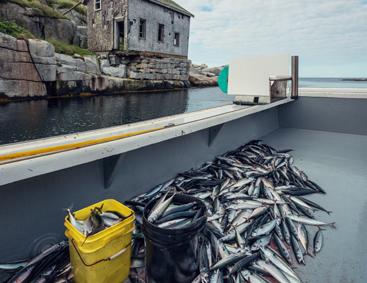
Atlantic mackerel illustrates the value of the legal protections afforded by the modernized Fisheries Act. For more than a decade, the stock languished in the critical zone while overfishing continued, with approximately 8,000 tonnes caught each year.
That changed in 2022, when DFO added Atlantic mackerel to the Act’s Fish Stocks provisions, which require the development of rebuilding plans for critically depleted stocks. The inclusion triggered a much-needed commercial moratorium until a plan was developed. An exception was made for a limited bait fishery, reflecting efforts to balance rebuilding needs with socio-economic realities.
In 2024, DFO released the mackerel rebuilding plan with multiple objectives intended to rebuild the stock out of the critical zone while still allowing some fishing opportunities, enhancing scientific and Indigenous knowledge, and reducing post-discard and other sources of fishing mortality. Harvesters in Atlantic Canada and Quebec will benefit from these actions with rebuilding of the stock well underway and a move out of the critical zone predicted in the 2030s.
14 Rebuilding plans were evaluated using two rubrics. The first is aligned with the Fishery (General) Regulations, assessing compliance across nine regulatory criteria. The second — Oceana Canada’s comprehensive rubric — incorporates international best practices and includes more ambitious criteria such as analysis of rebuilding impediments, socio-economic impacts, and inclusion of Indigenous Knowledge Systems. Full scoring details and the evaluation rubrics are available: Schijns, R. (2025) Status and Strength of Rebuilding Plans in Canada. In Fishery Audit 2025: Unlocking Canada’s Potential for Abundant Oceans. Oceana Canada. https://oceana.ca/wp-content/uploads/ sites/24/2025/11/A2.-Status-and-Strength-of-Rebuilding-Plans-in-Canada.pdf
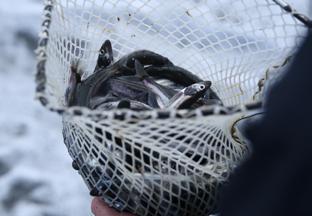
Delivering on these actions will transform Canada’s policy commitments into measurable rebuilding — turning momentum into abundance. Canada’s fisheries are a cornerstone of the ocean economy. Approximately 72,000 people make their living directly from fishing and related activities, while the country’s commercial marine fisheries are valued at $4.6 billion. 15 Rebuilding depleted fish stocks is essential to protecting this industry and to sustaining biodiversity, food security, and the cultural fabric of coastal and Indigenous communities.
In the year ahead, Oceana Canada calls on DFO to use the knowledge and policy tools already available to deliver on commitments and implement real change on the water. This includes upholding its commitments in the following areas:
Fisheries sustainability:
Prescribe all federally managed fish stocks under the Fish Stocks provisions of the Fisheries Act to strengthen science-based management and boost Canada’s credibility in global fisheries trade.
Ecosystem approach to fisheries management:
Strengthen and expand DFO’s Forage Species Policy to apply to all forage fish, rebuilding the foundation of the ocean food web that supports commercial fisheries and long-term productivity.
Provide certainty and predictability for fish harvesters by investing in timely stock assessments, monitoring all catches, assigning a status to all uncertain stocks, and building climate-resilient fisheries.
Indigenous reconciliation:
Strengthen law, policy, and practices to include Indigenous Knowledge Systems, and implement collaborative fisheries management agreements with Indigenous governments and organizations. 1 4 2 5 3
Transparency and accountability:
Publish timely fisheries management plans and advisory records, and ensure broad, equitable rightsholder and stakeholder participation to strengthen public trust and inclusive decision-making.
Together, these actions will shift Canada’s fisheries management from reactive to goal-based. They will make fisheries resilient and abundant. And they will secure healthy oceans, thriving communities, and a strong ocean economy for generations to come, with more stocks rebuilt to healthy levels and fewer crises to manage.
15 Office of the Auditor General of Canada (2023). Report 9 Monitoring Marine Fisheries Catch—Fisheries and Oceans Canada. 2023 Reports 6 to 10 of the Commissioner of the Environment and Sustainable Development to the Parliament of Canada. https://www.oag-bvg.gc.ca/internet/English/parl_cesd_202311_09_e_44372.html
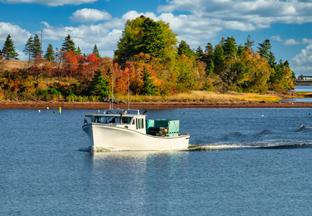
The data in this report focuses exclusively on Canada’s marine fisheries. This includes finfish, shellfish, and other invertebrates but not freshwater fish or fish, such as salmon, that spend part of their life in freshwater. The 2025 data in this report covers the period from July 2, 2024, to July 1, 2025.
Each year, Oceana Canada corrects minor errors found during the update process. As a result, some historical values may differ slightly from previous reports.
Canada’s fisheries management performance is assessed using indicators developed from globally accepted best practices and DFO’s policy framework. The analysis is based on data from 194 index stocks† published on DFO websites.
For full details about the methodology and analysis, visit oceana.ca/FisheryAudit2025
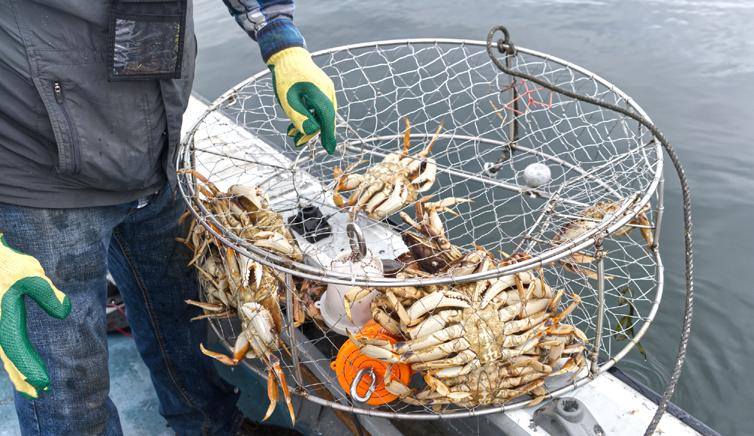
Assign stock status to all uncertain stocks.
Apply ecosystem-based reference points and harvest control rules consistently.
Generate climate-risk-based advice for all stocks.
Collaborate with Indigenous Peoples to pair Indigenous Knowledge Systems and Western science to strengthen ecosystem approaches to fisheries management.
Finalize implementation of the Fishery Monitoring Policy for 23 priority stocks and begin implementation for at least five additional stocks in each DFO Region annually until all stocks are covered.
Accelerate modernization of monitoring through electronic reporting and monitoring technologies that record all sources of catch.
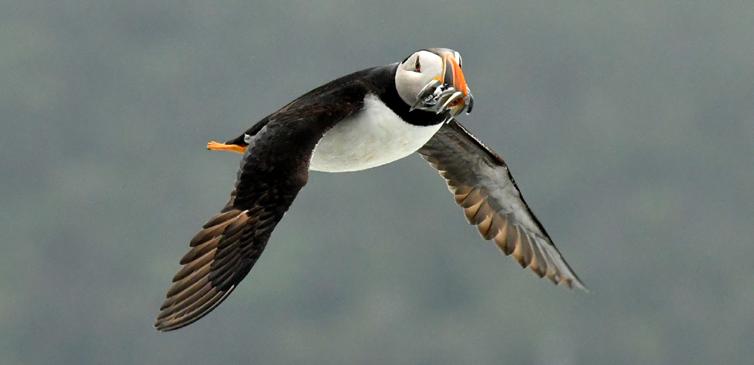
Implement rebuilding plans for all remaining critical stocks.
Make annual management decisions consistent with the law and policies to grow and maintain healthy stocks.
Ensure diverse and inclusive representation at advisory committees and make transparent, evidence-based decisions.
Prescribe all federally managed fish stocks under the Fish Stocks provisions of the Fisheries Act
Define “sustainable” in the Fisheries Act and regulations.
Publish an annual report to Parliament evaluating progress on the Fish Stocks provisions and the Sustainable Fisheries Framework, with clear targets and timelines.
Revise Sustainable Fisheries Framework policies to include Indigenous Knowledge Systems.
Implement collaborative fisheries management agreements.
Support Indigenous stewardship initiatives — including fisheries, habitat protection, and monitoring — and expand knowledge-pairing initiatives.
Publish an Ecosystem Approach to Fisheries Management strategy that reflects inclusive, holistic management grounded in both Indigenous Knowledge Systems and science.
Expand the Forage Species Policy to cover all forage fish, managed with ecosystem-based rules informed by Indigenous Knowledge Systems and science.
Join Canada’s Ocean Comeback.
Canada’s oceans can recover — but only if we act now. Every rebuilt fishery means stronger coastal communities, more food security, and a healthier planet.
Sign the petition at oceana.ca/ RebuildAbundance to help restore ocean abundance within our lifetime.
1 2
Share the vision — talk to friends, family, and colleagues about why rebuilding wild fish populations matters for Canada’s future.
Together, we can rebuild abundance — for people, nature, and the economy.
Acknowledgements
Oceana Canada thanks the many people, including several team members, who contributed to this report, particularly David Costalago, Jack Daly, Vaishali Dassani, Kim Elmslie, Tess Geers, Isabelle Jubinville, Josh Laughren, Josh Martin, Lauren McLennan, Dr. Robert Rangeley, Rebecca Schijns, Julie Stauffer, Jennifer Whyte, and Lesley Wilmot.
Oceana Canada was established as an independent charity in 2015 and is part of the largest international advocacy group dedicated solely to ocean conservation. Oceana Canada has successfully campaigned to ban single-use plastics, end the shark fin trade, make rebuilding depleted fish populations the law, improve the way fisheries are managed, and protect marine habitat. We work with civil society, academics, fishers, Indigenous Peoples, and governments to return Canada’s formerly vibrant oceans to health and abundance. By restoring Canada’s oceans, we can strengthen our communities, reap greater economic and nutritional benefits and protect our future. Find out more at Oceana.ca